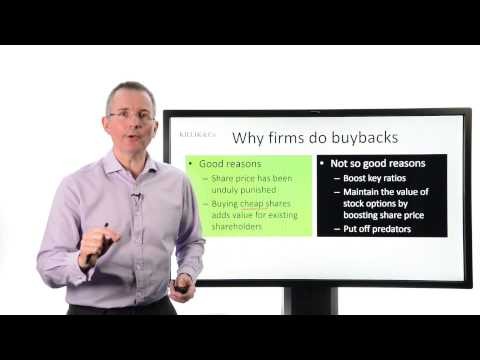Is it too late to jump on the stock buyback bandwagon
Post on: 26 Май, 2015 No Comment

(The opinions expressed here are those of the author, a columnist for Reuters.)
CHICAGO (Reuters) — Public companies share the wealth with shareholders in a number of ways. Sometimes they channel profits into quarterly dividends. They can also buy back their own shares.
Corporations have been on a buyback binge in recent years. S&P 500 companies purchased $118 billion of their stock in the second quarter of this year, up 18 percent from the first quarter, according to S&P Dow Jones Indices. (During the second quarter of 2012, companies bought back $111 billion.)
Although the merits of buybacks are hotly debated among analysts, they often can be beneficial for investors. A small group of exchange-traded funds are capitalizing on this trend. In a bull market, companies that buy their own stock on the cheap can benefit when the overall market is rising.
One of the largest funds in this miniscule group is the PowerShares Buyback Achievers Portfolio Exchange-Traded Fund, with more than $2 billion in assets. The fund’s strategy of investing in mostly large-cap stocks that have effected a net reduction of shares outstanding of five percent of more in the past 12 months has paid off handsomely.
During the past year through November 29, the fund has returned about 42 percent, compared to the 30-percent gain by the S&P 500 Index. The fund, which charges 0.71 percent in annual expenses, has beaten the index by five percentage points during the past three- and five-year periods.
How has the PowerShares fund managed to best the S&P 500 by such a wide margin? It has a slight tilt toward value stocks. The average price-to-book value of its holdings is 1.8, compared to 2.6 for the S&P 500. (The lower the price-to-book ratio, the greater chance a stock is undervalued relative to the rest of the market.)
Stocks in the fund include ConocoPhillips, American International Group and Viacom Inc.
A related strategy can be found in the AdvisorShares TrimTabs Float Shrink ETF, up 38 percent for the annual period through the end of the month. It’s more expensive than the PowerShares fund, at 0.99 percent in yearly expenses.
Like the PowerShares fund, the AdvisorShares portfolio holds less well-known stocks, such as Corning Inc, McKesson Corp and Parker-Hannifin Corp.
WILL BUYBACKS CONTINUE?
One of the reasons corporate treasurers find buybacks attractive is rock-bottom interest rates enable them to finance buying shares. Hamstrung by a slack economy that curtails hiring and research and development spending, they can easily bolster stock holdings by purchasing company shares in the open market.
Buyback announcements can also trigger a feeding frenzy. Investors see a company buying its own shares and join the bandwagon, thinking they, too, are getting a good deal. In a rising market, that can help a stock price appreciate.
And since the funds involved in buybacks may be undervalued relative to the larger market anyway, they may see more upside — especially if they are less popular than the companies that typically dominate stock-market indexes.
There’s a problem that runs counter to the feedback effect, though. What if corporate treasurers are buying at or near the top of the market? Then they are not buying bargains, although there’s no way of telling until a downturn comes. All told, it’s difficult to tell whether this strategy is a long-term winner.
I don’t have good data to suggest it is good (or) bad for shareholders, Todd Rosenbluth, director of ETF and mutual fund research for S&P Capital IQ, said in an email. We looked at a point in time and found that often managements bought shares back at levels that seemed too high, but since then, of course, most stocks have climbed higher.
The buyback picture might change when the Federal Reserve starts to throttle back its stimulus and raise interest rates. Few know when that will happen, but it may dampen enthusiasm for low-cost share financing.
At the very least, you should keep in mind that buyback funds will probably work best in a bull market, yet are not without risk. They won’t insulate you from the bruising of a stock selloff, nor are they inexpensive to own relative to broad-market index funds.
(Follow us @ReutersMoney or; here ; Editing by Lauren Young and Nick Zieminski)














